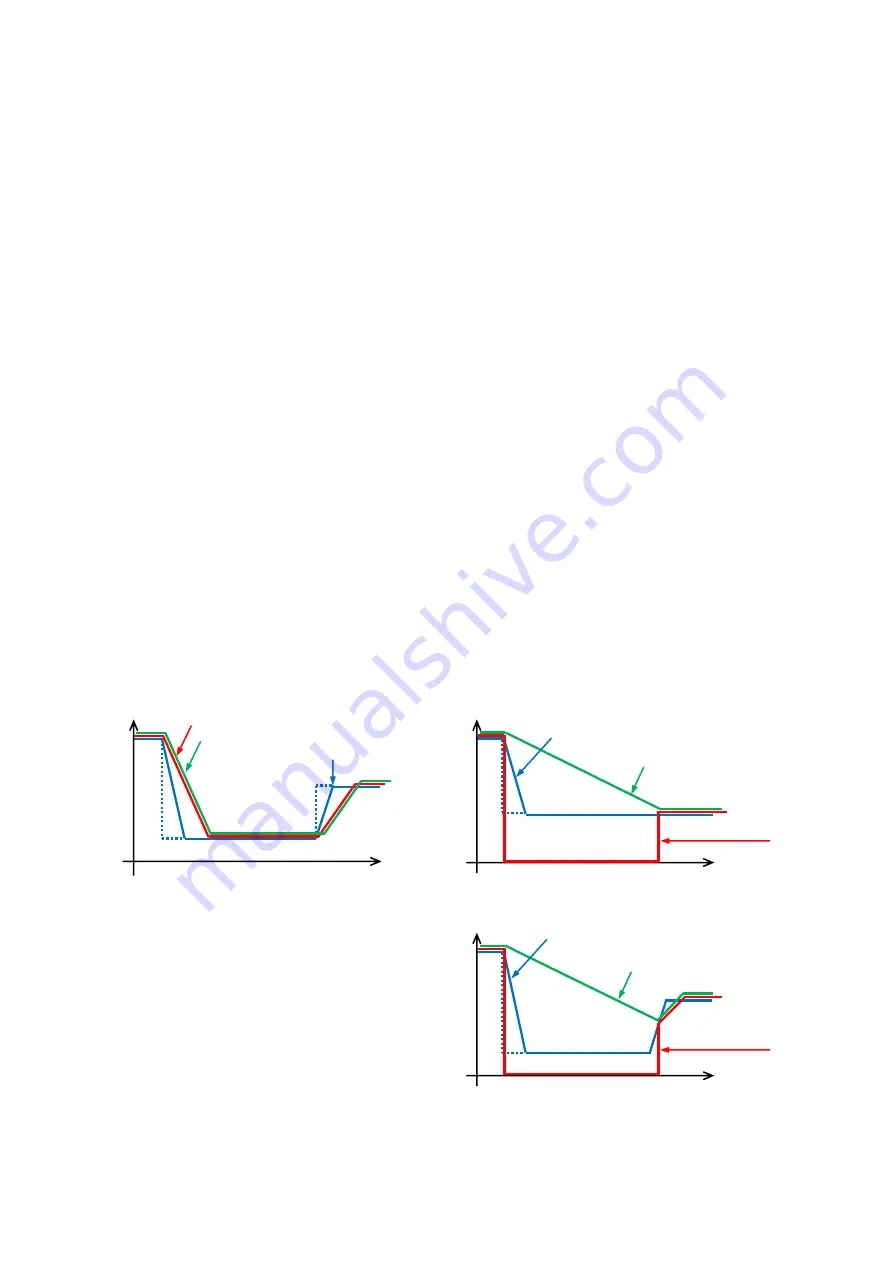
46 / 72
HBC-series V7 LV+MV
P82:
Cruise controls Ramp
(values in seconds)
Sets the rate of reaction speed at which the cruise control tries to maintain a set speed.
P22:
Brake intensity
(for car control type only)
(value in %)
Function enables to set the maximal force of proportional brake in the maximal deflection of the joystick (braking intensity) + possibili
ty “no brake”
(suitable for systems with mechanical brake). Set according to your needs.
If you wish automatically brake also in neutral, set parameter „
P23
“,
Brake in Neutral. Function is symmetrical for both directions.
P23:
Brake intensity in Neutral (in STOP) position
(for Cars and Aircrafts type only)
(value in %)
Car
- If you wish to automatically brake when the throttle stick is in Neutral position (STOP position), you may set the intensity of braking. If
you do not wish to brake when in Neutral, set „0“ to this parameter (do not brake when STOP position).
Increase braking force is possible any time by moving throttle stick (by change driving signal) to opposite direction (to max. brake posi-
tion by
P22 setting
).
Aircraft
- Parameter set braking intensity in STOP position of the th not brake possibility. There is no
Brake
available (P22), position P7
and P8 joystick align in one)
Boat
- This type of control does not the ability to set the brake, respectively. setting of this parameter is ineffective, for these types of brake
controls is not sense.
P25:
Brake Ramp
(time to reach full braking force)
(value in milliseconds)
Define speed of activation of braking (speed of “actuate brake pedal”).
P26:
Brake Ramp in Neutral
(time to reach full braking force)
(value in milliseconds)
Define speed of activation of automatic braking in Neutral position (in STOP position).
P21:
Freewheel
No
(freewheel OFF, no active, synchronous rectification mode ON)
Yes
(freewheel ON, with synchronous rectification mode ON)
Yes, (no synchro)
(freewheel ON, without synchronous rectification)
Operation
with turned off freewheel
can be compared to a normal car with gear shifting. If you move throttle down, the engine brake active to
new position of the throttle. The more you move throttle down, the more braking intensity. If you move the joystick (throttle) to neutral, the engine
is braking (or stopped) very intensive. The engine basically follows (copies) of the control signal (joystick).
If the
freewheel is on
, every time the throttle move to a lower value (of course, also to neutral) the engine is disconnected (and don´t braking) up
until the engine inertia slows down the speed corresponding to the new joystick position. Then again, the engine is powered. It is actually electron-
ic equivalent of mechanical freewheel.
In the case of
freewheel without synchro
behavior is similar to that in the case of "freewheel is on." The difference is that transitions between
connecting / disconnecting the engine can be smoother in some configurations, but efficiency of the controller is little bit worse.
Run without freewheel
Run with freewheel
0
Control signal
Joystick (throttle) moving
motor rpm
čas
100 %
0
100 %
Unloaded motor rpm
čas
motor PWM
Control signal
Joystick (throttle) moving
motor PWM
0
100 %
čas
Control signal
Joystick (throttle) moving
Unloaded motor rpm
motor PWM






























